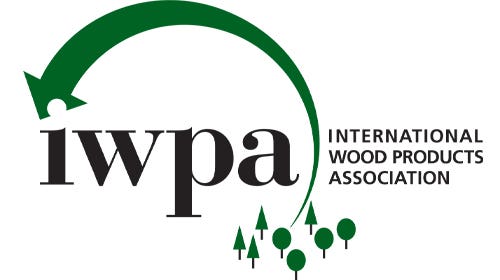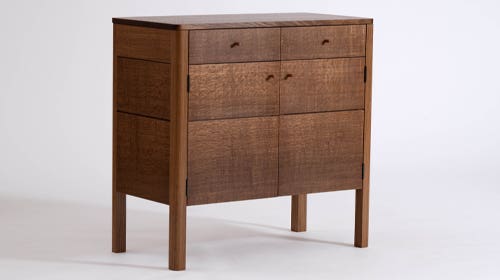Poplar sales are typical of tough times
During the last six to nine months, conversations with domestic wood dealers have become rather redundant. No matter what species is being talked about, the message is the same: sales…
During the last six to nine months, conversations with domestic wood dealers have become rather redundant. No matter what species is being talked about, the message is the same: sales are fair at best, pricing is basically stable, inventories are purposely kept low, and everyone wants to know when the economy is going to bottom out so business can start picking back up. And unfortunately, no one has any answers.
“Poplar is still pretty steady. I mean, nothing is moving at any great shakes, but poplar — for us, anyway — has always been a pretty steady wood,” says Jerry Anton of O’Shea Lumber Co., a wholesaler in Glen Rock, Pa. “It’s a pretty versatile, utility wood that’s used for millwork and molding.
“The price has been OK, but the price of lumber is not great anywhere. Everything seems to be dropping; every time I look at the market report, it’s dropping down. There’s just not a whole lot of good news out there. We’re thankful for any orders we can get and just try to work hard at all of them. Everything is about the same; oak is still not doing much, but there are orders for cherry and mahogany and the maples. The normal stuff is still going on, but in a much smaller quantity.”
Yellow poplar (Liriodendron tulipifera) is usually referred to simply as poplar and is also known as tulip tree and tulip poplar. Despite its name, yellow poplar is a member of the magnolia family. True poplars include aspen (Populus tremuloides), cottonwood (Populus deltoides) and balsam poplar (Populus balsamifera), all members of the willow family.
Although there aren’t any hotbed areas for lumber sales in the country, there are some pockets where wood dealers are having more success than others.
“The economy hasn’t hit us nearly as hard as some of other retailers as a whole because it is such a specialty business,” observes John Porter of the Woodworkers Source store in Phoenix. “We have a lot of customer loyalty, a lot of repeat customers, and we have that mail order aspect on our Web site and that still works for us. We had a downside last year, but not as severe as most.
“I sell a lot of poplar; it’s probably my third-most popular wood. I sell more red oak and alder and then poplar after that. They’re buying it either as a paint-grade material because it’s not very expensive and it does take a paint without any problem. It’s a nice economical wood, especially for beginners because it is easy to mill and there is very little trickiness to it. Then there are people who will stain it and finish it for furniture projects.”
Yellow poplar grows from Southern New England to Florida, and west to Missouri, and is the state tree of Indiana, Kentucky and Tennessee. Trees reach heights of 100'-150' and are often free of limbs up to 75'. Trunk diameters of 8' are common. Poplar is a fast grower and, for a hardwood, is soft and lightweight, with a specific gravity of .42.
“Poplar is a secondary wood and we run some in molding and paint-grade stock,” says Steve Wall, owner of Wall Lumber Co., in Mayodan, N.C. “It’s a fairly decent seller for us. It’s probably eighth to 10th down the line. It’s for somebody who wants to go the more inexpensive route; it’s still cheap in my book. We sell a decent amount, but we find our customers that do the finer furniture and the high-end cabinets — that’s still not something they present for their prime piece. Instead they’ll use the maples, the cherry, whatever.”
The overwhelming attribute of poplar is that it takes paint extremely well. It is used extensively as a secondary wood and for all types of cabinetry, paint-grade doors, frames and trim, sashes, boxes, crates, baskets and shipping pallets. Poplar’s sapwood is narrow and creamy-white; the heartwood is yellow to brown to greenish-brown. The wood’s grain is straight with a fine-to-medium texture, and poplar has very few knots. The wood can be stained to resemble walnut or cherry, and it dries rapidly and glues well, but doesn’t hold nails particularly well.
“The poplar market has tailed and a lot of it has to do with the economy, I don’t think it has to do with anything else,” says Bob Hansen of Badger Hardwoods of Wisconsin, a retail and wholesale dealer in Walworth, Wis. “It’s been a hard take on understanding who is doing what since last spring. It’s a difficult clientele; things are spiking all over the place. Some weeks I wonder what in the world am I doing [in business] and the next week it’s going like crazy and then it tails off again. We’re just hoping it settles down and eases into some kind of predictability.”
Retail prices for 100 bf of kiln-dried, 4/4 FAS yellow poplar, surfaced on two sides, ranged from $2.25 to $2.60/bf in the Northeast; $2.30 to $2.60/bf in the Southeast; $2.35 to $2.70/bf in the Midwest; and $2.59/bf to $2.70/bf in the West.
Wholesale prices for 1,000 bf of kiln-dried 4/4 FAS yellow poplar ranged from $2,150 to $2,250/mbf in the Northeast; $2,150 to $2,350/mbf in the Southeast, $2,050 to $2,350/mbf in the Midwest; and $2,350 to $2,500/mbf in the West.
This article originally appeared in the March 2009 issue.







